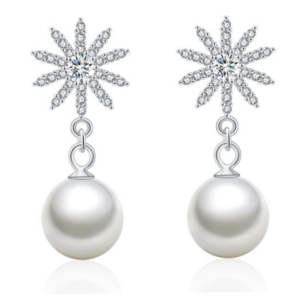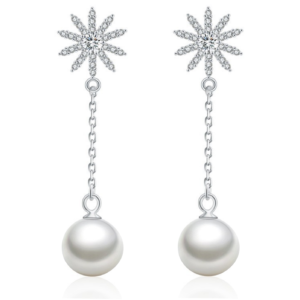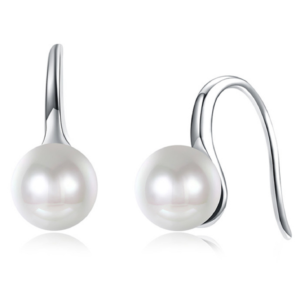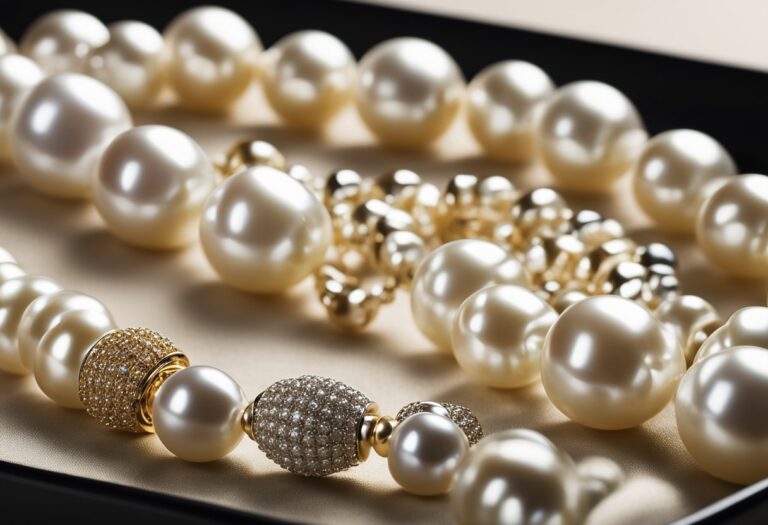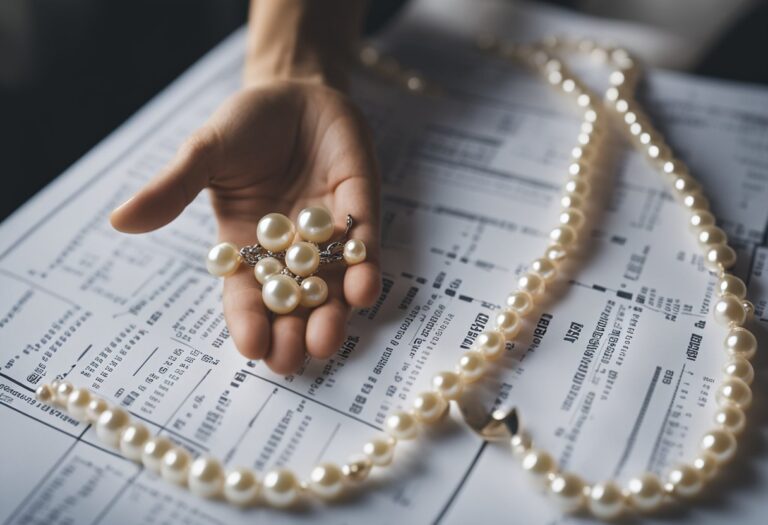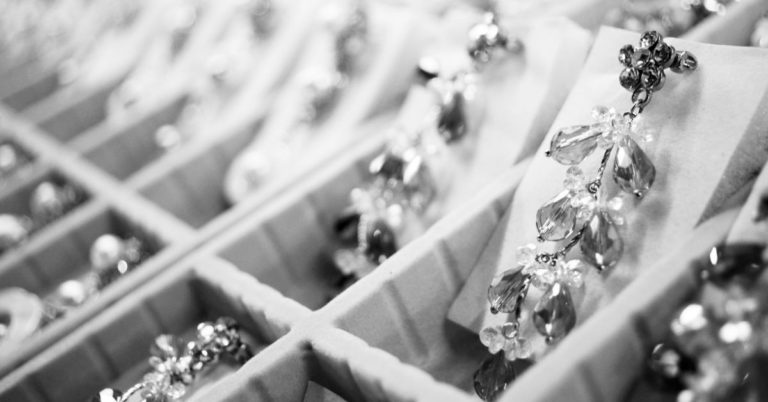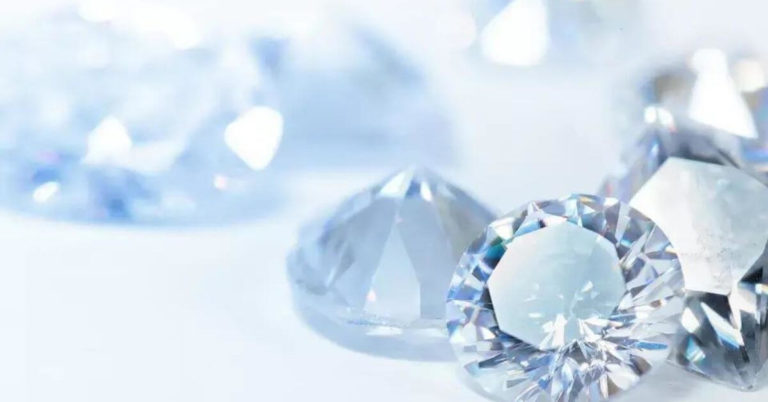Freshwater Pearl vs Saltwater Pearl: Know The Difference
Pearls are timeless treasures of the sea, captivating with their luster and elegance. Both freshwater and saltwater pearls offer unique qualities that set them apart.
Freshwater pearls are cultivated in mussels that reside in lakes and rivers, often yielding a variety of shapes and colors. In contrast, saltwater pearls grow in oysters in the ocean, typically resulting in rounder and more lustrous larger size pearls.

When you’re considering the difference between freshwater and saltwater pearls, it’s important to look beyond their origins.
Freshwater Pearl vs Saltwater Pearl
Freshwater pearls, can be produced in larger quantities per mussel, which often makes them more affordable.
Saltwater pearls on the other hand, tend to have a thicker nacre coating, the shimmering, iridescent substance that gives pearls their beauty, due to the longer cultivation period.
Here’s a straightforward comparison to help you understand the main distinctions between Freshwater Pearl vs Saltwater Pearl:
| Feature | Freshwater Pearls | Saltwater Pearls |
|---|---|---|
| Water Source | Lakes and rivers | Oceans |
| Nacre Thickness | Thinner, varying | Thicker |
| Shape and Color | Diverse range, often irregular | Typically round, white or cream |
| Luster | Soft to rich depending on quality | High and reflective |
| Price | Generally more affordable | Often more expensive |
Whether you’re drawn to the affordability and uniqueness of freshwater pearls or the classic roundness and luster of saltwater pearls, each has its own alluring qualities that can suit your style and budget.
Characteristics of Freshwater and Saltwater Pearls
When exploring the diverse world of pearls, understanding the characteristics of freshwater and saltwater pearls will guide you in selecting a gem that resonates with your style and values.
Nacre and Luster
Freshwater Pearls:
- Nacre: Typically thicker nacre due to not having a bead nucleus
- Luster: Softer and more of a satiny sheen
Saltwater Pearls:
- Nacre: Thinner nacre layers around a bead nucleus
- Luster: Higher and more reflective, especially in Akoya pearls
Shape and Size
Freshwater Pearls:
- Shape: Often irregular and varied due to being nucleated with tissue
- Size: Generally smaller, but can vary significantly
Saltwater Pearls:
- Shape: More consistently round because of the bead nucleus
- Size: Larger average size with more uniformity
Color Variations
Freshwater Pearls:
- Colors: Wide range, including white, cream, and pastel tones like pink, peach, and lavender
Saltwater Pearls:
- Colors: Predominantly white for Akoya; Tahitian pearls have darker hues such as black, silver, and green; South Sea pearls have white or golden tones
Here’s a comparative table for a quick overview:
| Characteristic | Freshwater Pearls | Saltwater Pearls |
|---|---|---|
| Nacre | Thicker | Thinner |
| Luster | Soft, satin-like | High, reflective |
| Shape | Irregular shapes | Mostly round |
| Size | Smaller & varied | Larger & uniform |
| Colors | White, cream, pastels | White, black, gold |
Remember, your choice between freshwater and saltwater pearls can align with personal style, the occasion, and your budget.
Cultivation and Origin

When you’re considering pearls, understanding where they come from and how they’re farmed is crucial. The methods and geographical regions involved directly influence their qualities.
Pearl Farming Techniques
Cultured Freshwater Pearls
Generally, you’ll find these in mollusks from freshwater sources like lakes and rivers. China leads the production, with the USA, Japan, and other Asian countries also contributing.
Pearls here develop within the tissue layers, often yielding multiple pearls per mollusk. These pearls vary widely in shape and color, providing a more affordable option for your jewelry collection.
Cultured Saltwater Pearls
Typically produced in marine oysters, these pearls form when an irritant is intentionally placed within the oyster. Japan is renowned for Akoya pearls, while areas like Australia, Tahiti, and French Polynesia are known for South Sea and Tahitian pearls, respectively.
Saltwater pearls, such as the luxurious Tahitian, often boast a more uniform shape and a higher luster. These characteristics, alongside their rarity, contribute to their higher price point.
Comparison of Cultivation Techniques
| Freshwater Pearls | Saltwater Pearls | |
|---|---|---|
| Environment | Lakes, Rivers, Ponds | Oceans, Seas |
| Leading Regions | China, USA, Japan | Japan, Australia, Tahiti, French Polynesia |
| Pearl Formation | Within tissue layers, multiple per mollusk | Around an irritant, usually one pearl |
| Pearl Characteristics | Varied shapes/colors, more affordable | Uniform shape/high luster, more expensive |
Geographical Influence
The place of origin not only stamps a type of pearl with its geographical identity but also influences its characteristics. For instance:
- China: As the powerhouse for cultured freshwater pearls, China offers a vast array of pearls, known for their affordability and variety in shape and size. This versatility makes them a common choice for unique jewelry pieces.
- Japan: The birthplace of pearl cultivation, Japan is famous for Akoya pearls, highly prized for their roundness and luster. Indonesia, Vietnam, and Thailand are also key players in the industry, each offering a unique take on the pearls cultivated within their waters.
- Australia, Tahiti, French Polynesia: These regions offer the luxurious South Sea and Tahitian pearls. Australian South Sea pearls are among the largest and most valuable, while Tahitian pearls boast exotic colors and are synonymous with high-end elegance.
Remember, each pearl’s place of cultivation impacts its value, appearance, and even the farming practices employed.
So, whether you’re drawn to the vast array of shapes from freshwater locales or the pristine beauty of saltwater pearls, your choice will be enriched by the history and technique behind its creation.
Pearl Pricing and Aesthetic Value

Understanding the nuances between freshwater and saltwater pearls can greatly influence both their price and aesthetic appeal.
Whether choosing a necklace or considering pearl jewelry for versatile styling, pearl price and value are driven by the pearls’ quality and the market’s prevailing trends.
Market Demand
Saltwater Pearls:
- High demand for classic types like Japanese Akoya pearls
- Luxury market favors large pearls such as Tahitian and South Sea pearls
Freshwater Pearls:
- High demand for their high affordability with high level of luster.
- Known for their economical appeal
- Increasing popularity for their diverse colors and shapes
Pearl Pricing
| Pearl Type | Average Price Range | Nacre Quality | Typical Use |
|---|---|---|---|
| Freshwater | More Affordable | Solid nacre | Budget-friendly jewelry |
| Saltwater Akoya | More Expensive | Mirror-like luster | Classic, high-end jewelry |
| South Sea | Premium Pricing | Thick nacre | Statement and luxury pieces |
| Tahitian | High but Variable | Unique overtones | Bold, stylish accessories |
Key Pointers:
- Freshwater pearls offer great value, particularly if you’re are looking for high lustrous quality while remaining affordable.
- Saltwater pearls tend to be much more expensive due to their rarity, making them a luxury investment.
Jewelry and Style Considerations
Elegance & Versatility:
- Saltwater pearls, particularly Akoya, are synonymous with classic elegance.
- Freshwater pearls suit a range of styles from casual to chic due to their variety of shapes and hues.
Sourcing:
- Online retailers often provide competitive pricing and a vast selection.
- Ensure authenticity when purchasing from online platforms to guarantee the pearl’s quality.
Quick Note on Caring for Freshwater Pearl and Saltwater Pearl Jewelry
Avoid any chemicals or damaging solutions like vinegar and baking soda when caring for either type.
For maintenance of your pearl jewelry, only choose gentle cleaning methods and take notes on the few common dos and don’ts for pearl jewelry maintenance.
| Dos | Don’ts |
|---|---|
| Clean with a soft, damp cloth using mild soap or specialized cleaner | Avoid abrasive materials, harsh chemicals, or solvents |
| Store pearls in a soft pouch or lined box away from direct sunlight and heat | Avoid exposing pearls to excessive heat and direct sunlight |
| String pearls on silk or nylon thread and have them restrung periodically | Avoid hanging pearls, as it may stretch the thread |
| Wipe pearls gently after wearing and check clasps for tightness | Keep pearls away from perfume, hairspray, and cosmetics |
| Bring pearls to a professional for deep cleaning | Avoid using ultrasonic or steam cleaners for home cleaning |
How to Choose The Right Pearl Type?
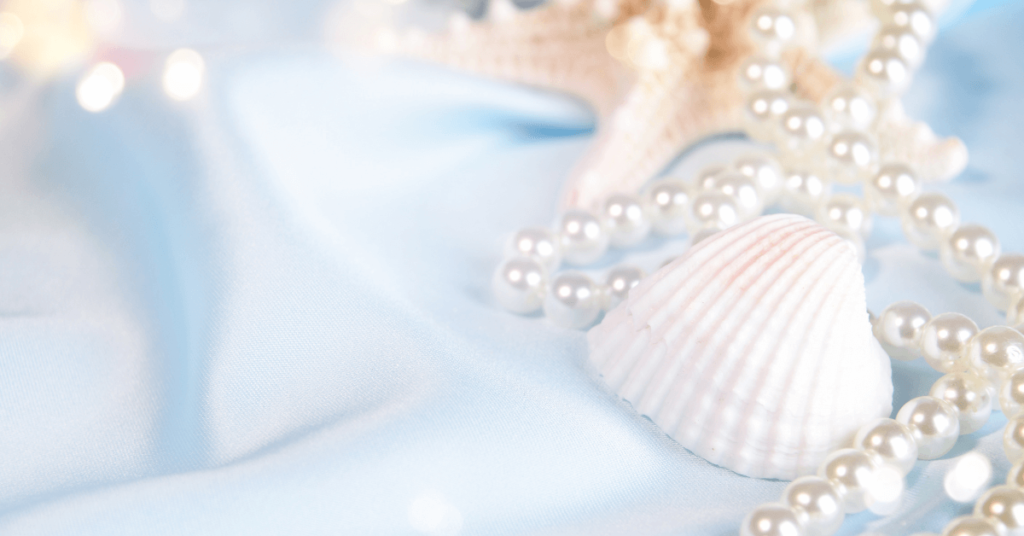
When selecting pearls, consider both Freshwater and Saltwater varieties, as each offers unique attributes.
Choosing Your Pearls
When searching for the ideal pearls, make your decision based on quality, selection, and personal style.
- If looking for a classic and elegant look, explore freshwater pearls, which come in an array of shades and unique shapes, renowned for their affordability and beautiful luster.
- On the other hand, if looking for a luxurious and glamorous style, consider the Akoya saltwater pearls, renowned for their spherical shape and intense luster.
| Factor | Freshwater Pearls | Saltwater Pearls |
|---|---|---|
| Durability | More durable, less prone to chipping; rate 2.5 on Mohs scale. | Slightly more delicate, but still resilient. |
| Care | Clean with a soft cloth; avoid harsh chemicals. | Use a microfiber jewelry cloth; avoid ultrasound cleaners. |
| Nacre Quality | Generally thicker nacre since they are nearly 100% nacre. | Varies, but can be very high, especially in Akoya pearls. |
| Rarity | Abundant, as mussels produce multiple pearls. | Rarer, particularly natural pearls. |
| Uniformity | Wide range of shapes; less often perfectly round. | Known for their symmetry and roundness. |
| Cultured Pearl | Cultured in freshwater bodies mainly in China. | Cultured in saltwater oysters globally. |
| Mollusk | Grown within hyriopsis cumingii mussels. | Grown within varieties like Pinctada fucata. |
| Types Available | Numerous shapes and pastel colors. | Includes Akoya, Tahitian, White South Sea, etc. |
Buying Your Pearls
When purchasing your pearl jewelry in-store or online, ensure you review the vendor’s reputation and quality assurances.
Natural pearls, especially natural saltwater pearls, are a rare find and often command a higher price due to their scarcity.
Remember, whether you gravitate towards the lustrous Akoya or the vibrant Freshwater, your choice should align with your individual preferences and the occasion you are selecting them for.
Here’s some pearl jewelry you maybe interested:
Read Also:
- How to Choose The Best Earrings for Your Face Shape (with Pictures and Celebrities)
- Earrings Styles: Popular Types of Earrings with Pictures
- Freshwater Pearl vs Cultured Pearl: Unraveling the Mysteries
- Cultured Pearls: Real and Elegant Gem At Affordable Price
- Freshwater Pearl vs Saltwater Pearl: Know The Difference

